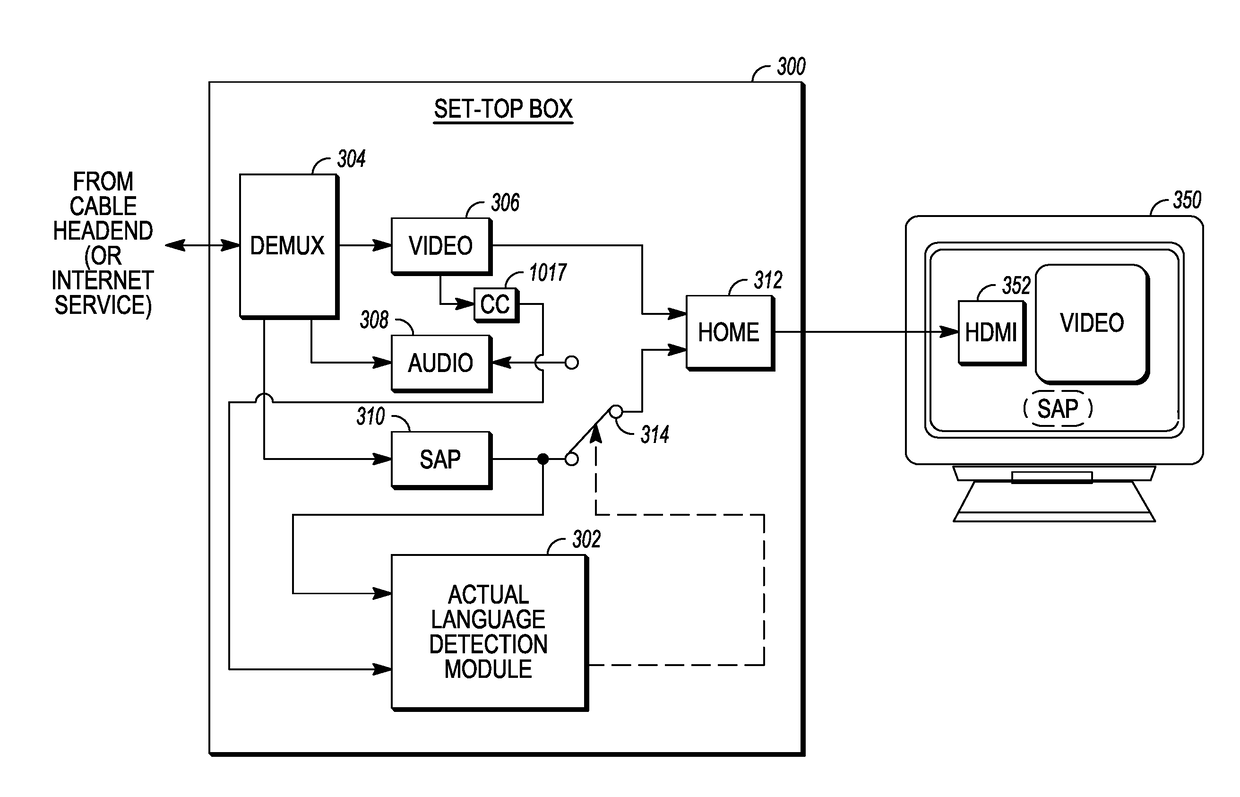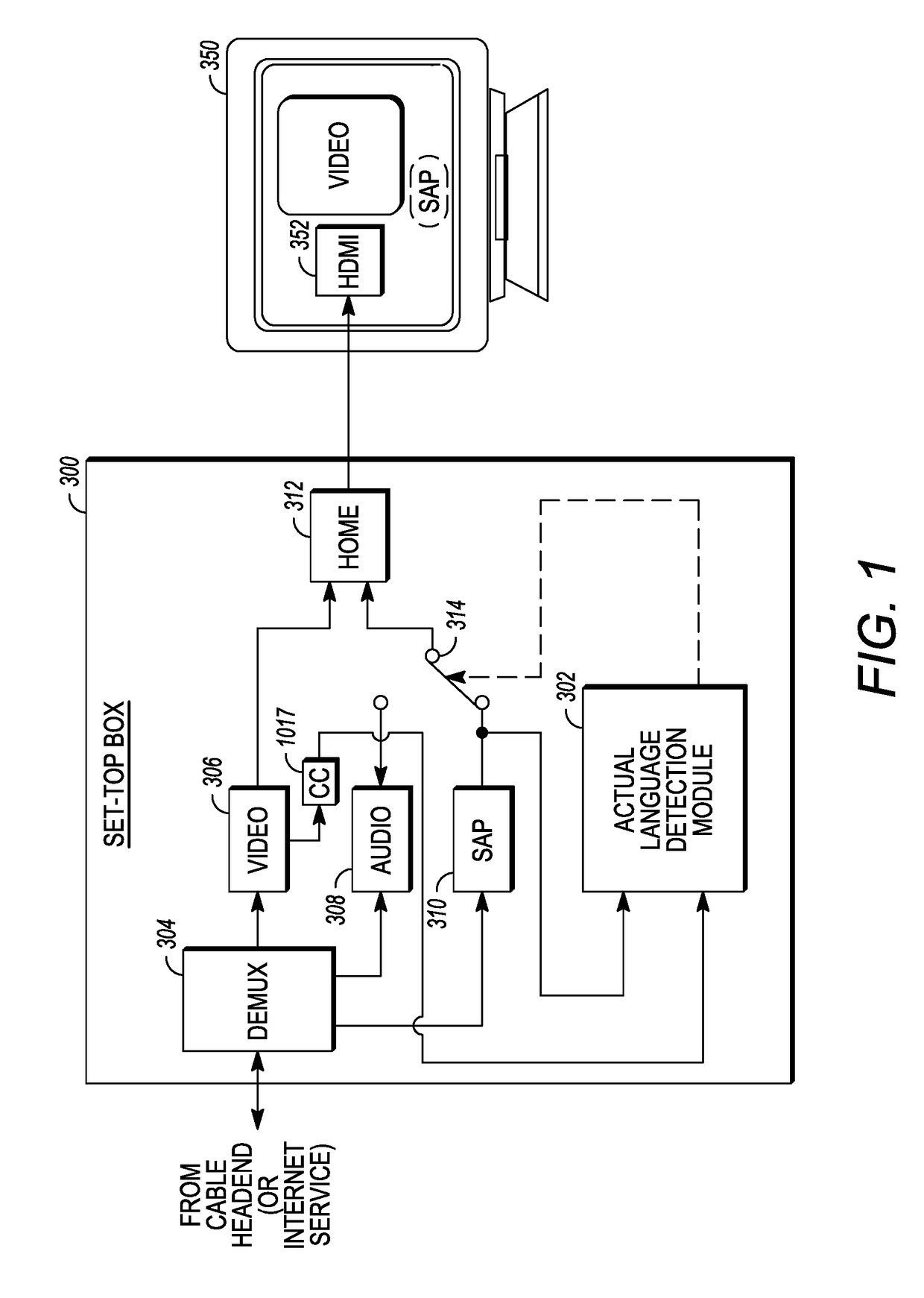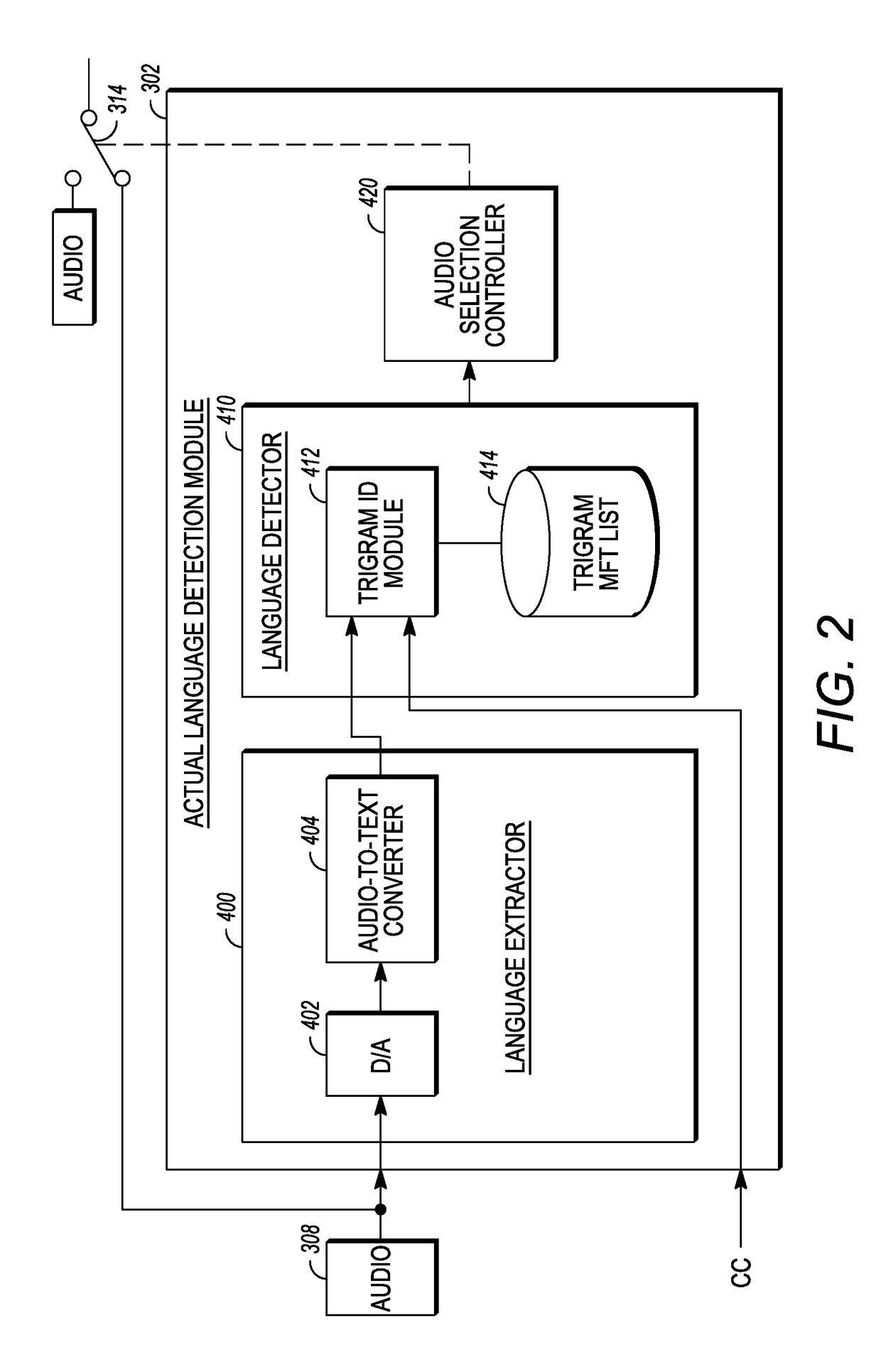Language-based signaling of secondary audio
a secondary audio and language-based technology, applied in the field of reliable and accurate signaling of secondary audio channels, can solve the problems of unreliable automatic selection of proper audio channels, not always possible, and at best unreliable automatic selection of audio channels,
- Summary
- Abstract
- Description
- Claims
- Application Information
AI Technical Summary
Benefits of technology
Problems solved by technology
Method used
Image
Examples
Embodiment Construction
[0035]The present invention determines and corrects signaling mismatch in secondary audio based on the actual content of the audio in the secondary audio channel. Disclosed embodiments relate to use in a set-top box (or Home Network End Device “HNED”), but the principles apply equally to use within a user HDMI sink device such as a television or digital video receiver (DVR).
[0036]The invention alleviates problems in conventional use of an ISO language descriptor, particularly observed by the inventors hereof, to automatically detect the textually named language contained in an associated audio stream. Use of an ISO language descriptor has conventionally been felt to provide reliable language identification.
[0037]The inventive system and method additionally, or instead, monitors the actual audio content of the currently selected audio channel, converts the audio in real time to text, and based on the first few or so detected words determines a most probable actual language of the aud...
PUM
 Login to View More
Login to View More Abstract
Description
Claims
Application Information
 Login to View More
Login to View More - R&D
- Intellectual Property
- Life Sciences
- Materials
- Tech Scout
- Unparalleled Data Quality
- Higher Quality Content
- 60% Fewer Hallucinations
Browse by: Latest US Patents, China's latest patents, Technical Efficacy Thesaurus, Application Domain, Technology Topic, Popular Technical Reports.
© 2025 PatSnap. All rights reserved.Legal|Privacy policy|Modern Slavery Act Transparency Statement|Sitemap|About US| Contact US: help@patsnap.com



